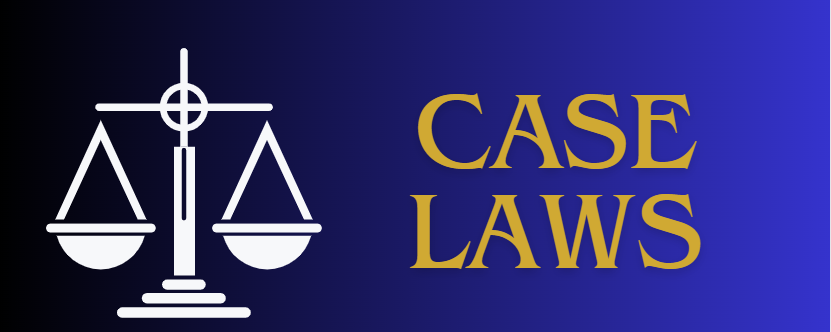اگرچہ قانون عام طور پر جرائم کی فوری رپورٹنگ پر زور دیتا ہے ، لیکن عدالتیں تسلیم کرتی ہیں کہ جنسی زیادتی کے مقدمات کو ان کی حساس نوعیت کی وجہ سے زیادہ باریک نقطہ نظر کی ضرورت ہوتی ہے۔ اس طرح کے جرائم کی اطلاع دینے میں تاخیر کو دوسرے جرائم میں تاخیر کے ساتھ موازنہ نہیں کیا جاسکتا ہے۔ بہت سے عوامل بچوں کے جنسی استحصال کی اطلاع دینے میں تاخیر کا سبب بن سکتے ہیں ، بشمول صدمہ ، خوف ، شرم ، ڈاکٹر کی طرف سے جارحانہ معائنے کی وجہ سے بے عزتی ، 6 دھمکی ، یا آگاہی کی کمی۔ نتیجتا، ہمارے ملک کی عدالتیں پولیس مواد کو رپورٹ تیار کرنے میں تاخیر پر غور نہیں کرتی ہیں جب تک کہ حالات ایسے نہ ہوں کہ وہ منفی نقطہ نظر کے متقاضی ہوں۔ یہ خاص طور پر جنسی استحصال کا شکار ہونے والے بچوں سے متعلق معاملات میں سچ ہے.
"موقع کا گواہ" وہ شخص ہوتا ہے جس کی نازک وقت میں کسی واقعہ کے مقام پر موجودگی محض اتفاق سے ہوتی ہے۔ یہ ان کی معمول کی سرگرمیوں یا فرائض کا حصہ نہیں ہے۔ موقع کے گواہ کی گواہی کو مشکوک ثبوت سمجھا جاتا ہے۔ یہ عام طور پر قبول نہیں کیا جاتا ہے جب تک کہ متعلقہ وقت پر جائے واردات پر ان کی موجودگی کو ثابت کرنے کے لئے قابل اعتماد اور معقول وجوہات فراہم نہ کی جائیں۔ عام حالات میں، قانون ان کی جگہ سے غیر موجودگی کا اندازہ لگاتا ہے. بہر حال، ایک موقع گواہ لازمی طور پر جھوٹا گواہ نہیں ہے. اس کے ثبوتوں کی احتیاط سے جانچ پڑتال کی جانی چاہئے۔ اگر کوئی عینی شاہد موقع پر اپنی موجودگی کی معقول وضاحت کرتا ہے اور اس کے واقعہ کے بیان سے اعتماد پیدا ہوتا ہے، تو اس کی شہادت کو دیگر ثبوتوں کے ساتھ غور کیا جاسکتا ہے۔ ایک راہگیر اس وقت موقع کا گواہ نہیں ہوتا جب کسی عوامی راستے پر، کسی ایسی جگہ پر جہاں عوام اکثر آتے رہتے ہیں، یا جب اس کا گھر جائے واردات کے قریب واقع ہو۔ اگر واقعہ کی جگہ پر اس کی موجودگی مشکوک نہ ہو تو موقع کے گواہ کے بیان کو سچ تسلیم کیا جاسکتا ہے۔
مجرمانہ مقدمات میں ڈی این اے رپورٹس کو تین اقسام میں تقسیم کیا جاسکتا ہے: مثبت، منفی اور غیر حتمی، ہر ایک کے مختلف مضمرات ہیں. ایک مثبت ڈی این اے رپورٹ حتمی طور پر ملزم کو جائے واردات یا متاثرہ پر پائے جانے والے حیاتیاتی شواہد سے جوڑتی ہے، جو مجرم کی شناخت قائم کرنے کے لئے مضبوط ثبوت کے طور پر کام کرتی ہے۔ تاہم ، اس کی ثبوتی قدر حفاظتی اقدامات پر منحصر ہے ، جیسے تحویل کی مناسب زنجیر ، ثبوت کا تحفظ ، اور سائنسی پروٹوکول کی تعمیل۔ ان حفاظتی اقدامات کے بغیر، اس کی معتبریت پر سوال اٹھایا جا سکتا ہے. دوسری جانب ایک منفی ڈی این اے رپورٹ سے پتہ چلتا ہے کہ ملزم کے ڈی این اے اور تجزیہ کردہ حیاتیاتی مواد کے درمیان کوئی مماثلت نہیں ہے۔ تاہم، اس طرح کے نتائج ضروری طور پر ملزم کو بری نہیں کرتے ہیں، کیونکہ کنڈوم کا استعمال، غیر انزال، جانچ میں تاخیر، یا آلودگی جیسے عوامل ڈی این اے کی عدم موجودگی کی وضاحت کرسکتے ہیں. غیر حتمی ڈی این اے رپورٹس اس وقت پیدا ہوتی ہیں جب فرانزک تجزیہ خراب نمونوں ، ناکافی ڈی این اے مواد ، یا آلودگی جیسے مسائل کی وجہ سے حتمی نتیجہ پیدا کرنے میں ناکام رہتا ہے۔ اس طرح کی رپورٹیں نہ تو ملزم کو ملوث کرتی ہیں اور نہ ہی خارج کرتی ہیں ، جس کے لئے عدالتوں کو منصفانہ نتیجے پر پہنچنے کے لئے دیگر دستیاب ثبوتوں پر غور کرنے کی ضرورت ہوتی ہے۔ جب ڈی این اے رپورٹ منفی یا غیر حتمی ہوتی ہے، تو عدالتوں کو ملزم کے جرم کا تعین کرنے کے لئے طبی نتائج، عینی شاہدین کی گواہی، اور واقعاتی حقائق جیسے دیگر شواہد پر غور کرنا چاہئے.
سیکشن 375 پی پی سی میں واضح طور پر ریپ کی تعریف یہ کی گئی ہے کہ جسم کے کسی بھی حصے یا شے کے ساتھ وجائنا، منہ، مثانے یا گودے کا گھس جانا، قطع نظر اس کے کہ سیمینل ڈسچارج ہوتا ہے یا نہیں۔ لہٰذا، معمولی سی مداخلت بھی عصمت دری کے زمرے میں آتی ہے۔ متاثرہ کے نجی حصے میں اسپرماٹوزوا کی موجودگی داخلے کو قائم کرنے کے لئے ایک شرط نہیں ہے. جرم کا خلاصہ جسمانی سالمیت اور خودمختاری کی خلاف ورزی میں مضمر ہے، نہ کہ اس عمل کے جسمانی نتائج میں۔ یہ قانون اسپرماٹوزوا جیسے حیاتیاتی شواہد کی موجودگی پر متاثرہ کے وقار اور جسمانی خودمختاری کے تحفظ کو ترجیح دیتا ہے۔ بنیادی مواد کی عدم موجودگی استغاثہ کے کیس کے لئے مہلک نہیں ہے۔
بچوں کے ساتھ بدسلوکی کے معاملات کا پتہ لگانا اور مقدمہ چلانا سب سے زیادہ مشکل ہے کیونکہ متاثرہ اکثر واحد گواہ ہوتا ہے۔ یہ مشکل اس وقت مزید بڑھ جاتی ہے جب مجرم والدین یا قریبی خاندان کا رکن ہوتا ہے۔ عدالتوں کو چاہیے کہ وہ ان مقدمات کو زیادہ احتیاط اور حساسیت کے ساتھ نمٹائیں اور بچوں کو بدسلوکی سے بچانے کی ضرورت کو منصفانہ اور مناسب طریقہ کار کے اصولوں کے ساتھ متوازن کریں۔
While the law generally emphasizes the prompt reporting of crimes, courts acknowledge that sexual abuse cases require a more nuanced approach due to their sensitive nature. Delays in reporting such offences cannot be equated with delays in other crimes. Several factors can contribute to delay in reporting child sexual abuse, including trauma, fear, shame, dishonour due to invasive examination by a doctor,6 threat, or a lack of awareness. Consequently, courts in our country do not consider the delay in making a report to the police material unless the circumstances are such that they warrant an adverse view. This is especially true in cases involving child victims of sexual abuse.
A “chance witness” is a person whose presence at the scene of an incident at the critical moment is purely by coincidence. It is not a part of their usual activities or duties. The testimony of a chance witness is considered suspect evidence. It is generally not accepted unless credible and justifiable reasons are provided to establish their presence at the crime scene at the relevant time. Under normal circumstances, the law presumes their absence from the location. Nevertheless, a chance witness is not necessarily a false witness. His evidence should be scrutinized carefully. If a chance witness reasonably explains his presence at the spot and his narration of occurrence inspires confidence, his evidence can be considered along with other evidence. A passerby is not a chance witness when a crime is committed on a public thoroughfare, at a place frequented by the public, or when his house is situated in the close vicinity of the scene of the crime. The version of a chance witness can be accepted to be true if his presence at the place of the incident is not doubtful.
DNA reports in criminal cases can be categorized into three types: positive, negative, and inconclusive, each carrying distinct implications. A positive DNA report conclusively links the accused to the biological evidence found at the crime scene or on the victim, serving as strong corroborative evidence to establish the identity of the perpetrator. However, its evidentiary value depends on safeguards, such as the proper chain of custody, preservation of evidence, and adherence to scientific protocols. Without these safeguards, its reliability may be questioned. On the other hand, a negative DNA report indicates no match between the accused’s DNA and the biological material analyzed. Nevertheless, such findings do not necessarily exonerate the accused, as factors like condom use, non-ejaculation, delays in examination, or contamination could explain the absence of DNA. Inconclusive DNA reports arise when forensic analysis fails to produce a definitive result due to issues like degraded samples, insufficient DNA material, or contamination. Such reports neither implicate nor exclude the accused, requiring courts to consider other available evidence to reach a fair conclusion. When the DNA report is negative or inconclusive, courts must consider other evidence, such as medical findings, eyewitness testimony, and circumstantial facts, to determine the accused’s culpability.
Section 375 PPC explicitly defines rape as the penetration of the vagina, mouth, urethra, or anus with any body part or object, regardless of whether seminal discharge occurs. Therefore, even the slightest penetration constitutes rape. The presence of spermatozoa in the victim’s private part is not a prerequisite to establish penetration. The essence of the offence lies in the violation of bodily integrity and autonomy, not the physical outcomes of the act. The law prioritizes the protection of the victim’s dignity and bodily autonomy over the presence of biological evidence like spermatozoa. In a nub, the absence of seminal material is not fatal to the prosecution’s case.
Child abuse cases are among the most challenging to detect and prosecute because the victim is often the sole witness. This difficulty is further compounded when the perpetrator is a parent or close family member. Courts must deal with these cases with extra care and sensitivity, balancing the need to protect children from abuse with the principles of fairness and due process.
Criminal Appeal No. 964/J/2023
Nazar Hussain and another
Vs. The State























0 Comments